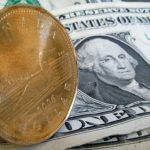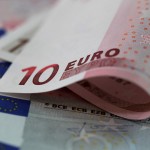Australian dollar traded lower against its US counterpart on Thursday, after a report showed that the final reading of HSBC manufacturing PMI for China was unchanged from the preliminary value in December.
AUD/USD touched a session low at 0.8908 at 7:08 GMT, after which consolidation followed at 0.8913, down 0.19% for the day after a 13% drop in 2013. Support was likely to be received at December 30th low, 0.8834, while resistance was to be encountered at December 31st high, 0.8949.
On Wednesday HSBC Holdings Plc and Markit Economics said that the final value of their manufacturing PMI for China remained unchanged from the preliminary reading at 50.5 in December, following a reading of 50.8 in November. The index stood above the key level of 50.0 for the fifth consecutive month, as the sub-index of new orders has demonstrated a steady increase.
“The moderation of Decembers final HSBC China Manufacturing PMI was mainly due to slower output growth,” said Hongbin Qu, Chief Economist and Co-Head of Asian Economic Research at HSBC.
This report usually influences the Aussie, as China is Australias largest export market.
In addition, the Australian Industry Group (AIG) said earlier today that its Performance of Manufacturing Index for Australia came in at a reading of 47.6 in December, after a month ago the index stood at 47.7.
The above mentioned data came out two days after it became clear that private sector lending in Australia showed decent results in November, which implied that nation’s economic activity might have gained strength. Private sector lending rose 3.8% in November on annual basis, marking the fastest pace in the past one year, after another 3.5% gain in October.
The yield on Australian 10-year government bonds rose nine basis points, or 0.09 percentage point, to reach 4.33%.
Meanwhile, the Federal Reserve Bank said on December 18th that it plans to reduce its monthly bond purchases in January to $75 billion from $85 billion, while also reinforcing its position that the benchmark interest rate will remain low for an extended period of time. Bank’s policymakers will probably trim asset purchases in increments of $10 billion over the next seven meetings before ending the program in December 2014.
On Tuesday the Conference Board research group reported that its gauge of consumer confidence in the United States climbed to a reading of 78.1 in December, or the highest level since September, following the upwardly revised value of 72.0 in November. The gauge of current assessment increased its value to 76.2 in December from 73.5 a month ago, while the index of economic expectations surged to 79.4 from 71.1 in November.
The confidence data was preceded by a report by the National Association of Realtor’s (NAR), which stated that the index gauging pending home sales in the country rose 0.2% in November to reach a reading of 101.7, which was the first monthly gain since May, when pending home sales hit highs unseen in six years. Experts had expected that sales will demonstrate a faster pace of increase in November, 1.0%. The report stated that demand for homes rose during last month, after having weakened in October due to higher mortgage rates.
Elsewhere, the Aussie was steady against the euro, with EUR/AUD cross up 0.06% to trade at 1.5448 at 7:52 GMT. AUD/NZD pair was gaining 0.11% on a daily basis to trade at 1.0864 at 7:52 GMT.





